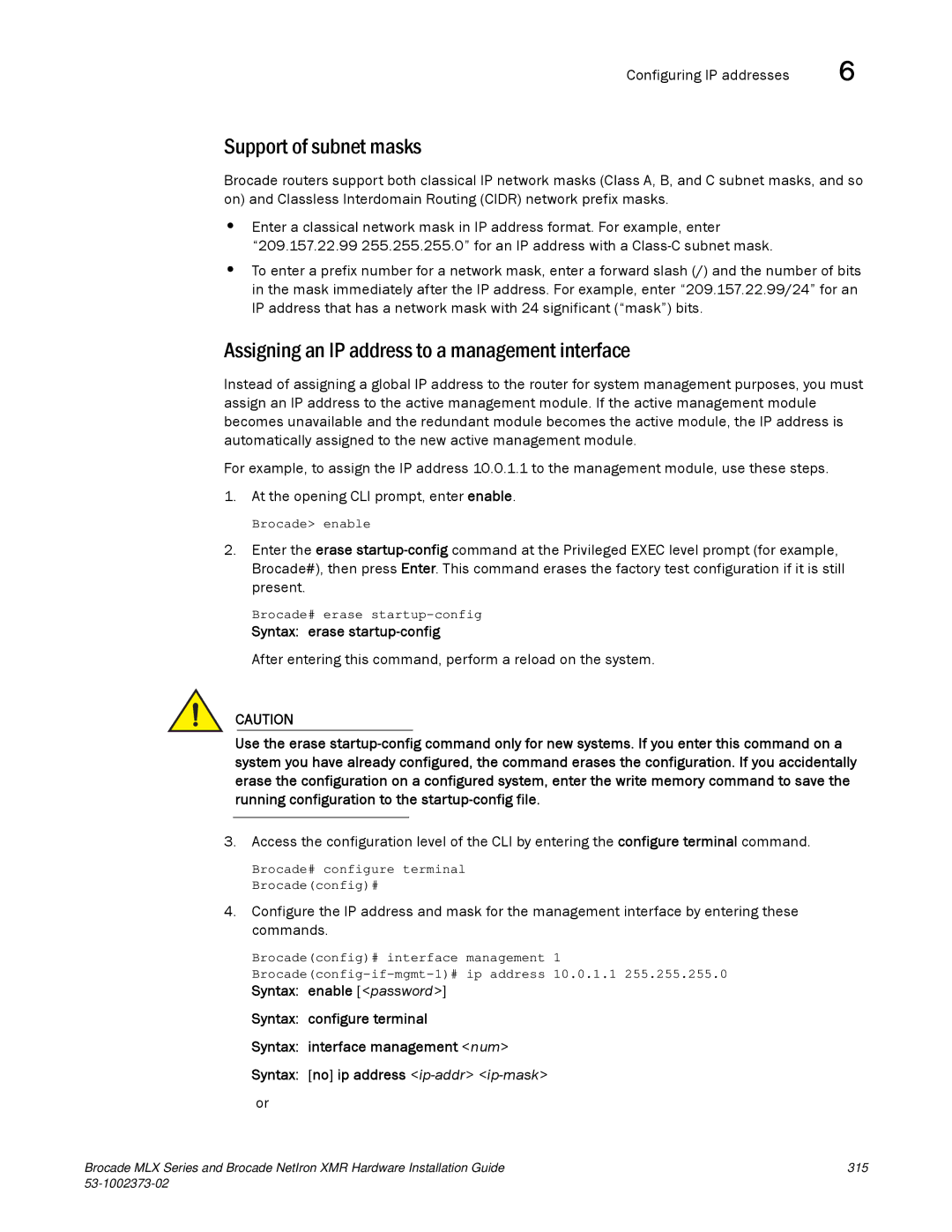
Configuring IP addresses | 6 |
Support of subnet masks
Brocade routers support both classical IP network masks (Class A, B, and C subnet masks, and so on) and Classless Interdomain Routing (CIDR) network prefix masks.
•Enter a classical network mask in IP address format. For example, enter “209.157.22.99 255.255.255.0” for an IP address with a
•To enter a prefix number for a network mask, enter a forward slash (/) and the number of bits in the mask immediately after the IP address. For example, enter “209.157.22.99/24” for an IP address that has a network mask with 24 significant (“mask”) bits.
Assigning an IP address to a management interface
Instead of assigning a global IP address to the router for system management purposes, you must assign an IP address to the active management module. If the active management module becomes unavailable and the redundant module becomes the active module, the IP address is automatically assigned to the new active management module.
For example, to assign the IP address 10.0.1.1 to the management module, use these steps.
1. At the opening CLI prompt, enter enable.
Brocade> enable
2.Enter the erase
Brocade# erase
Syntax: erase startup-config
After entering this command, perform a reload on the system.
CAUTION
Use the erase
3. Access the configuration level of the CLI by entering the configure terminal command.
Brocade# configure terminal
Brocade(config)#
4.Configure the IP address and mask for the management interface by entering these commands.
Brocade(config)# interface management 1
Syntax: enable [<password>]
Syntax: configure terminal
Syntax: interface management <num>
Syntax: [no] ip address
or
Brocade MLX Series and Brocade NetIron XMR Hardware Installation Guide | 315 |
|
|
